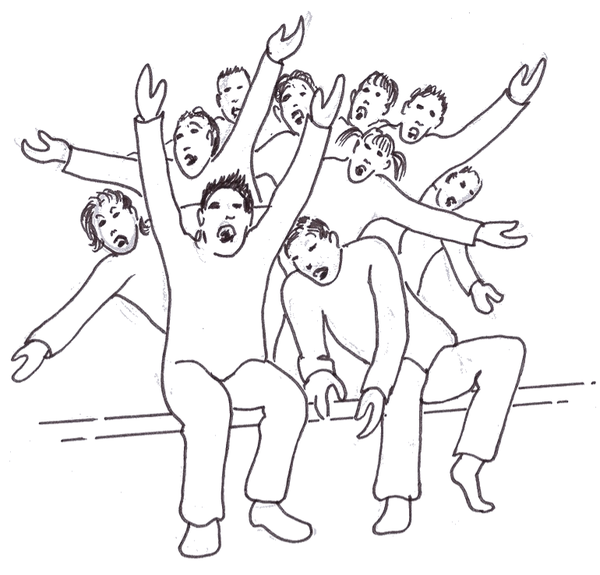| << Chapter < Page | Chapter >> Page > |
All cultures in the world practise some or other form of religion through religious ceremonies.
Choose a ritual that plays an important role in your religion. Then complete the questionnaire below. Thereafter it will be possible to determine which elements are usually present in religious rituals.
| RITUAL: | YES | NO | Majority of classYes/No |
| Is music involved? | |||
| Is movement involved? | |||
| Is dancing involved? | |||
| Is singing involved? | |||
| Are the words of the song important? | |||
| Is the singing mainly solo? | |||
| Is it mainly community singing? | |||
| Are there any elements that contribute to the atmosphere? (candles) | |||
| Does sharing play a role? (e.g. wine, bread) | |||
| Are symbols involved? (e.g. water) | |||
| Do you think an individual can perform a ritual? |
What is symbolism?
Symbolism plays a major role in rituals.
Think of the ritual of greeting

The Hatsiatsia, a ritual (ceremony) from Ghana, is performed on the first Sunday of each month. The people form a large circle with a bucket of holy water in the centre of the circle. While dancing slowly around the bucket, they all get a chance to dip their hands into the bucket to wipe their faces with the water. The water is used as a symbol of forgiving and forgetting (washing away) and discord between friends and family during the past month. The music is played on metal gongs.
MUSIC AND SYMBOLISM
Music plays an important role in rituals. Certain kinds of music is associated with certain rituals.
| School meeting | Wedding | National holiday | Sporting event |
The role of music in rituals






Investigate the music
Complete the following with regard to the music in a sporting ritual, e.g. in a rugby or soccer match between South Africa and England:
Which bond is formed?
What message is conveyed?
Describe the emotions experienced?
Describe the atmosphere that is created:
A School ritual
Complete the following with regard to the music in a school ritual:
Which bond is formed?
What message is conveyed?
Describe the emotions experienced:
Describe the atmosphere that is created:
S tep 1
Read the following, first in English and then in Xhosa:

S tep 2
The class divides into groups and each group does what the teacher asks them to do.
Choose the correct term and mark your choice clearly:
S tep 3
MASITHI is also known as “The Great Amen”.
Stephen Molefe (a teacher) composed this Xhosa song.
In many religions there is usually a prayer of thanksgiving at the end of the public worshipping. The whole congregation joins the minister at the end of the prayer of thanksgiving with this hymn. The words are : Let us say: Amen, We praise Thee
S tep 4
Sing the song.

S tep 5
Complete the following by choosing the right word.
| atmosphere | call and answer | message | bond | repetition | thankfulness |
_________________________between the congregation and the minister.
| Learning Outcomes(LOs) |
| LO 4 |
| EXPRESSION AND COMMUNICATION The learner is able to analyse and use multiple forms of communication and expression in Arts and Culture. |
| Assessment Standards(ASs) |
| We know this when the learner: |
| MUSIC (4.4) |
|
| DRAMA (4.2, 4.3) |
|
|
| DANCE (4.1) |
|
| VISUAL ARTS (4.5, 4.6) |
|
|
|

Notification Switch
Would you like to follow the 'Arts and culture grade 6' conversation and receive update notifications?